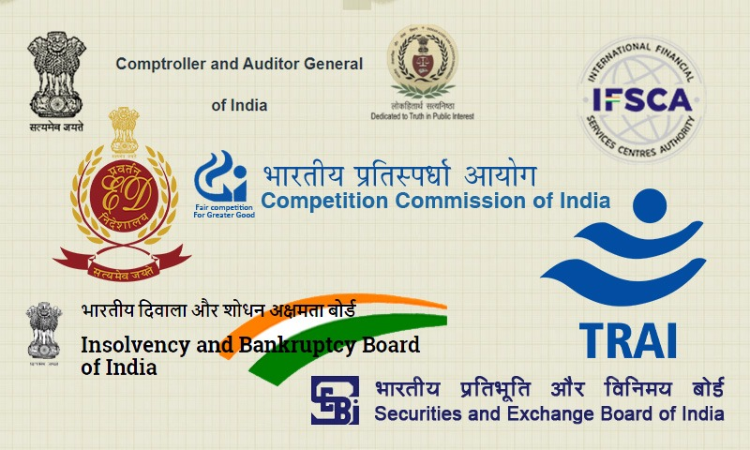Requirement For A Stronger Regulatory Regime
Divya Arora
29 July 2021 5:18 PM IST

The spurt in Indian economy induced simultaneous growth in the regulatory sphere of the country, which led to development of multiple regulatory bodies. An analysis of the past few years demonstrates the same. The Real Estate Regulatory Authority (RERA) along with Insolvency and Bankruptcy Board of India (IBBI) were established in 2016. On similar lines the National Financial Reporting Authority (NFRA) in 2018, the International Financial Services Centre Authority (IFSC) in 2019 and the recent Central Consumer Protection Authority (CCPA) in 2020. India proudly adopted a multi-regulatory framework to balance growth in all sectors. However, it was never a consciously deliberated reform. These bodies were created on an ad-hoc basis as per their need in the economy and market. However, it is pertinent to note that with the establishment of IFSC, the number of authorities governing the financial regulation sphere is seven[1]. This approach has given rise to multiple inter-regulatory conflicts, such as :
- Unit Linked Plan differences between Insurance Regulatory and Development Authority (IRDA) and Securities and Exchange Board of India (SEBI).
- Issues between Competition Commission of India (CCI) and Telecom Regulatory Authority of India (TRAI), and RERA.
- Concurrent action by Central Bank of India (CBI), Enforcement Directorate (ED), Economic Offence Wing (EOW), Serious Fraud Investigation Office (SFIO) in the IL & FS case.
Admittedly, a multi- regulatory framework offers specialization in dealing with complex matters. However, for effective functioning, clear demarcation in their jurisdiction, the mechanism for accountability and system for smooth coordination among regulators is an imperative reform. Thus, the focus is to propose a redressal mechanism, which encourages regulatory best practices.
- Limited Bodies - Clearer Jurisdiction: It is evident that each regulatory body has a mutually exclusive existence, yet they are interdependent for their effective working. Instead of the presence of multiple financial regulatory bodies, Justice BN Srikrishna Report recommended the merger of SEBI, IRDA, PFRDA[2], which seems a daunting yet viable alternative. From an investigation perspective, in the DHFL case, there was concurrent scrutiny by ED, CBI, SEBI, SFIO and RBI's oversight, keeping aside the resolution process which falls in the purview of IBBI. In this scenario, the creation of a national-level investigation agency is well-grounded. It would lead to the creation of a dedicated group of professionals to investigate cases of impropriety and fraud in all sectors, allowing interchange of expert personnel, considering the limited people specializing in this domain.
- The Mechanism for Accountability: As per existing norm, an Annual Report is submitted by the Regulators to the Parliament and audit directed by Comptroller & Auditor General of India (CAG). However, considering the functions of the regulators that are significantly increasing in each domain, this system is frail and inadequate. A framework that offers a solution and is adopted by various jurisdictions is the 'Regulatory Impact Assessment'. It provides a systematic process that involves the cost-benefit analysis of different regulatory alternatives, reviewing the objective, cost of a change, vis-à--vis benefits thereof. Ministry of Corporate Affairs implemented the above process while the constitution of IBBI. Along with this a periodic external review by an expert committee consisting of members from Central Government and cross regulators after every three years is a proposition that warrants consideration.
- Regulatory Intervention: The purpose of delegation to a specialized body is fulfilled, only when strong reasons and economic rationale back decisions. Laws are not purposeful unless the reasons are supported by empirical evidence, which if done, leaves less scope for amendments. This reduces ambiguity and increases adherence to law. This may be achieved by better dialogue with policy experts who keep in view the development objectives, industry experts who are in constant touch with the regulatory interface and the public, including investors, consumers and entrepreneurs. Their insights regarding the ambiguities in the law are crucial for drafting laws from a regulatory perspective. The step for formulation of Securities Code, as announced by the Finance Minister in Budget 2021 is a step in the right direction as it will help reduce ambiguities, ease compliance and ensure better implementation of laws.
The objective of a specialized body is to nip conflicting issues in the bud, resolve complex problems to protect broader interests and cater to all stakeholders. The regulators delegated with quasi administrative, legislative and judicial powers carry an additional burden to maintain adequate checks and balances. In pursuance of the above objectives, there needs to be constant cross-regulator and regulator-government dialogue along with an established mechanism incorporating the above suggestions to usher the winds of change in the regulatory regime which will ensure optimum utilization of public funds and streamlining laws concerning the powers and functions of each regulatory body.
The author is a lawyer and a policy enthusiast , views are personal.
[1]RBI, SEBI, IRDA, PFRDA, FMC and IBBI.
[2] Pension Fund Regulatory and Development Authority


